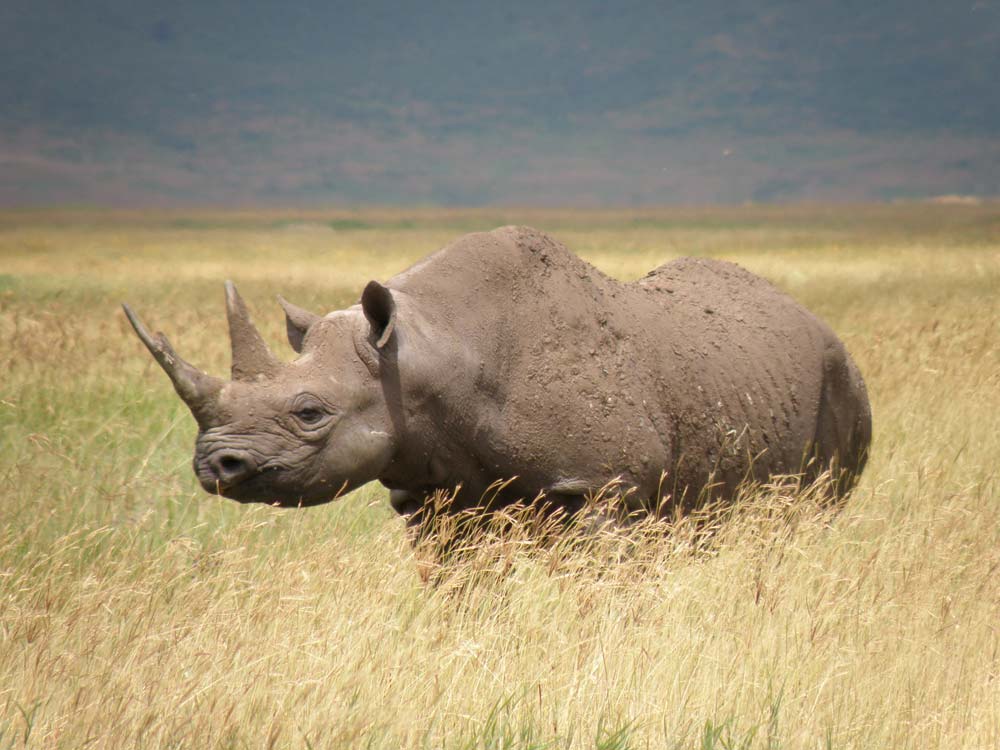
25% of Mammals at Risk of Extinction, IUCN Reports

About one in four mammal species are at risk of extinction, and the Western black rhino has officially been declared extinct, according to a new assessment of biodiversity by the International Union for Conservation of Nature (IUCN) and partners.
For the latest update, researchers assessed the status of 61,900 species of plants and animals.
The reassessments of several rhinoceros species show that the subspecies of the subspecies of the white rhino in central Africa — called the Northern white rhino (Ceratotherium simum cottoni) — is currently teetering on the brink of extinction and has been listed as "Possibly Extinct in the Wild." A subspecies of Javan rhino (Rhinoceros sondaicus annasmiticus) is probably extinct, following the poaching of what is thought to be the last animal in Vietnam in 2010. While this doesn't mean the end of the Javan rhino, it reduces the species to a single, declining population on the island of Java.
The assessment also showed an alarming 40 percent of Madagascar's terrestrial reptiles are threatened. The 22 Madagascan species currently identified as critically endangered, which include chameleons, geckoes, skinks and snakes, are now a conservation challenge, researchers say. New conservation areas being designated in Madagascar are expected to help conserve a significant proportion of these critically endangered species, such as Tarzan's chameleon (Calumma tarzan), the bizarre-nosed chameleon (Calumma hafahafa) and the limbless skink (Paracontias fasika). [Photos of IUCN wildlife]
Other findings include:
- A manta ray once thought to be a single species is actually two species: the reef manta ray (Manta alfredi) and the giant manta ray (Manta birostris), both of which are now classified as vulnerable. Considered the largest living ray, the giant manta ray can grow to more than 23 feet (7 meters) across.
- Five of the eight species of tuna are in the threatened or near threatened categories.
- Twenty-six recently discovered amphibians have been added to the IUCN Red List, including: the blessed poison frog (Ranitomeya benedicta), which is currently listed as vulnerable; and the summers' poison frog (Ranitomeya summersi), which is now listed as endangered.
- Plants are still underrepresented on the IUCN Red List, researchers report. Current work underway to increase knowledge includes a review of all conifers, with results showing the Chinese water fir (Glyptostrobus pensilis), for example, has moved from endangered status to critically endangered status; the primary cause is habitat loss as agriculture expands.
"The IUCN Red List is critical as an indicator of the health of biodiversity, in identifying conservation needs and informing necessary changes in policy and legislation to drive conservation forward," Jean-Christophe Vié, deputy director of IUCN's Global Species Program, said in a statement. "The world is full of marvelous species that are rapidly moving towards becoming things of myth and legend if conservation efforts are not more successfully implemented."
Follow LiveScience for the latest in science news and discoveries on Twitter @livescience and on Facebook.
Sign up for the Live Science daily newsletter now
Get the world’s most fascinating discoveries delivered straight to your inbox.










